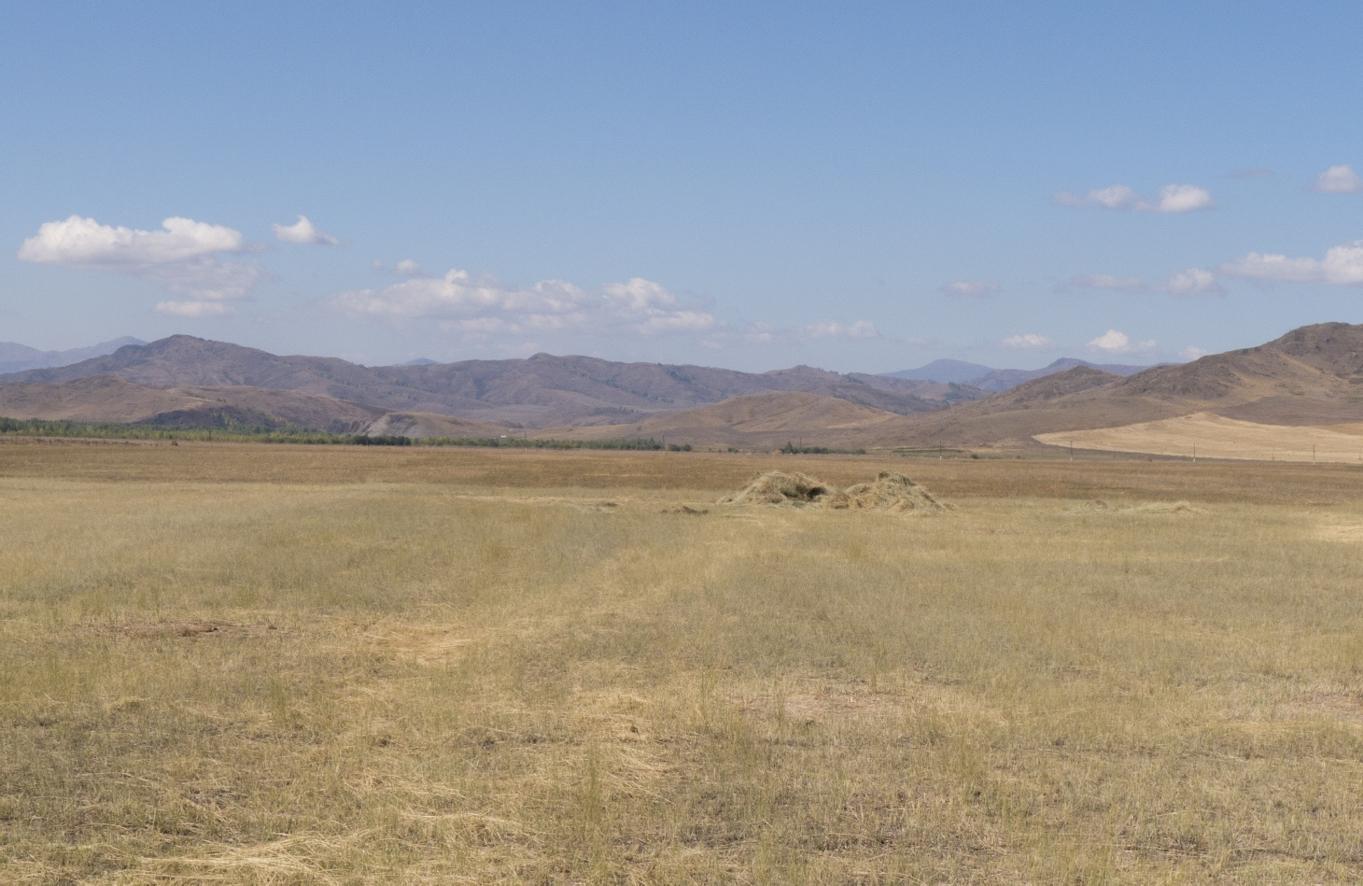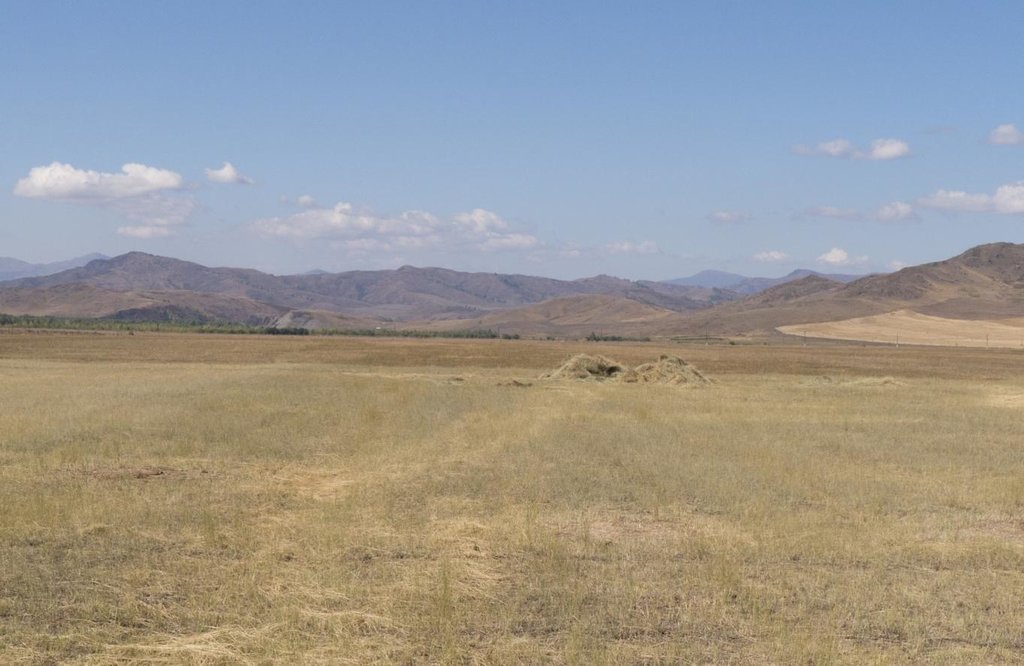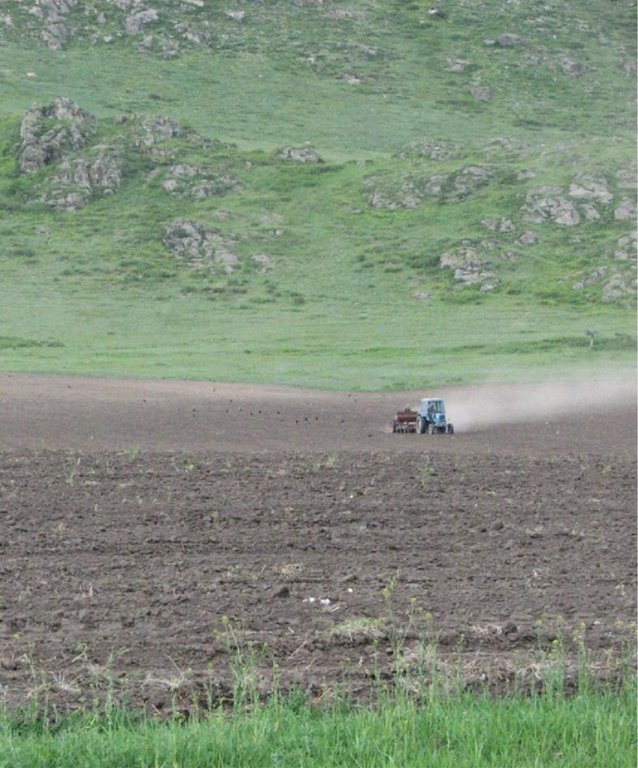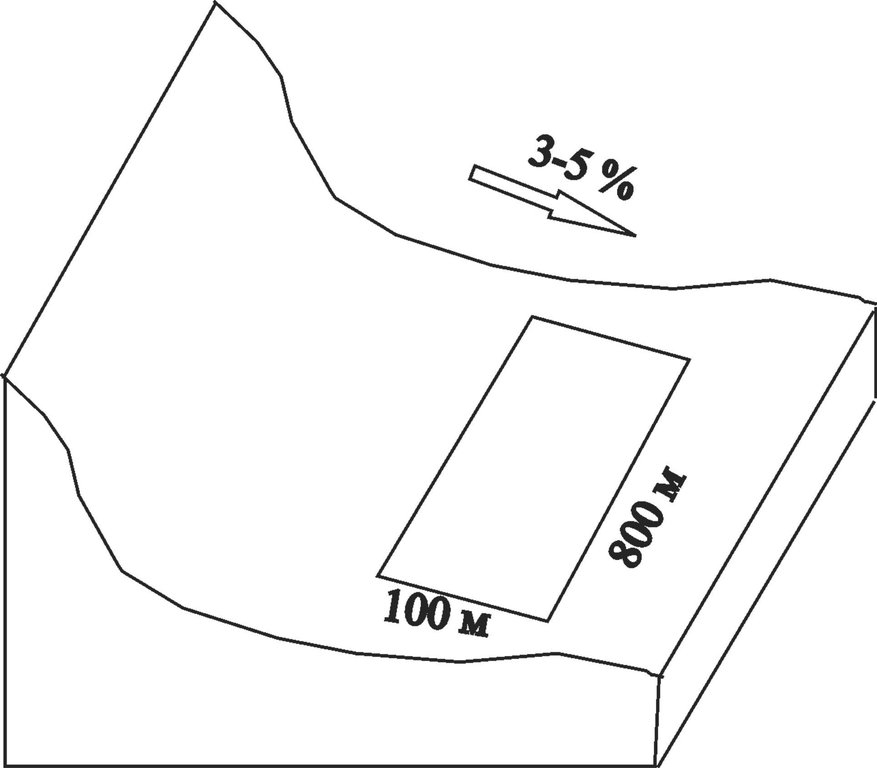Создание семенного участка многолетних трав (в рамках ИСЦАУЗР) [Kazakhstan]
- Creation:
- Update:
- Compiler: Konstantin Pachikin
- Editor: –
- Reviewer: Alexandra Gavilano
Казахстан - Инициатива Стран Центральной Азии по Управлению Земельными Ресурсами (CACILM/ИСЦАУЗР)
technologies_1115 - Kazakhstan
- Full summary as PDF
- Full summary as PDF for print
- Full summary in the browser
- Full summary (unformatted)
- Создание семенного участка многолетних трав (в рамках ИСЦАУЗР): Des. 28, 2016 (inactive)
- Создание семенного участка многолетних трав (в рамках ИСЦАУЗР): Junie 5, 2017 (inactive)
- Создание семенного участка многолетних трав (в рамках ИСЦАУЗР): Aug. 6, 2017 (inactive)
- Создание семенного участка многолетних трав (в рамках ИСЦАУЗР): Sept. 4, 2019 (public)
View sections
Expand all Collapse all1. General information
1.2 Contact details of resource persons and institutions involved in the assessment and documentation of the Technology
Key resource person(s)
land user:
Kazakhstan
SLM specialist:
Name of project which facilitated the documentation/ evaluation of the Technology (if relevant)
Central Asian Countries Initiative for Land Management (CACILM I)Name of the institution(s) which facilitated the documentation/ evaluation of the Technology (if relevant)
Kazakh Research Institute for Soil Science and Agr (Kazakh Research Institute for Soil Science and Agr) - Kazakhstan1.3 Conditions regarding the use of data documented through WOCAT
When were the data compiled (in the field)?
12/12/2011
The compiler and key resource person(s) accept the conditions regarding the use of data documented through WOCAT:
Ja
2. Description of the SLM Technology
2.1 Short description of the Technology
Definition of the Technology:
Улучшение пастбищ путем подсева многолетних бобовых и злаковых трав и создания семенных участков
2.2 Detailed description of the Technology
Description:
В результате увеличения поголовья скота и отсутствия у местного населения возможности использовать традиционные кочевые методы выпаса скота, скот был круглогодично сконцентрирован на участках, прилегающих к с. Катон-Карагай. Была сильно превышена нагрузка на пастбища и произошла деградация почвенного и растительного покрова, резко снизилась продуктивность, из травостоя выпали наиболее ценные виды растений. Для восстановления пастбищ, прилегающих к с. Катон-Карагай, в рамках проекта ГЭФ/ПМГ «Организация управления пастбищными угодьями села Катон-Карагай для минимизации деградации земель» была разработана технология, заключающаяся в коренном улучшении пастбищ путем посева многолетних бобовых (эспарцет, люцерна, галега восточная) и злаковых (кострец безостый, ежа сборная, ломкоколосник ситниковый) кормовых трав и их травосмесей. Такие технологии широко применяются на пастбищных землях умеренного и слабозасушливого поясов. Они отличаются низкой затратностью и содержанием, поскольку посев проводится один раз в несколько лет, высокой эффективностью восстановления почвенного и растительного покрова. Внедрение такой технологии также способствует повышению продуктивности пастбищ, а следовательно, и улучшению качества и увеличению веса скота. Все это сказывается на повышении доходов местного населения и улучшении качества жизни. Технология была применена на территории площадью 80 га, прилегающей к с. Катон-Карагай, , где ранее проводился интенсивный выпас скота. В настоящее время этот участок находится в краткосрочной аренде (5 лет) в крестьянском хозяйстве «Маметек». Описываемая технология внедрена в рамках подхода «Управление пастбищами через восстановление системы отгонного животноводства и коренного улучшения пастбищ», где КХ «Маметек» является одной из ключевых сторон.Технология заключается в подпокровном посеве многолетних трав или злаков в первый год освоения. При этом первоночально высеваются однолетние культуры, а затем многолетние травы. В первый и второй годы жизни трав угодья не используются в качестве пастбищ. До тех пор пока растения не достигнут полного развития и не образуется дернина, проводится только их скашивание осенью. Помимо собственно восстановления пастбищ для использования их по прямому назначению, планируется использовать и продавать семенной материал с участка для расширения площадей восстановления пастбищных территорий других сельских округов.
Purpose of the Technology: Восстановить деградированный участок, прилегающий к с. Катон-Карагай с последующим его использованием под пастбища, обеспечить производство семян многолетних трав и злаков для восстановления деградированных пастбищ и повышения продуктивности пастбищных угодий других территорий
Establishment / maintenance activities and inputs: 1. Ограждение участка для предотвращения травли посевов скотом.
2. Обработка почвы – отвальная вспашка на глубину 25-27 см с последующим боронованием и выравниванием.
3. Весенний посев покровных культур (ячмень, овес) на глубину 5-10 см.
4. После посева покровных культур производится посев многолетних трав и злаков (костер, пырей, житняк, эспарцет, донник, ежа) на глубину 2-3 см. Посев производится поперек посева однолетних культур.
3. Скашивание однолетних культур и многолетних трав на корма, которое проводится 1 раз в год осенью.
4.Сбор семян для высева их на другие участки проводится на третий год после посева. Семена предназначены для дальнейшего восстановления пастбищ на других площадях.
Для реализации технологии необходимы следующие начальные вклады: огораживание участка – закупка материалов (столбы, проволока), обработка почвы (аренда тракторов и сеялок), закупка семян для посева, аренда техники на скашивание и вывоз сена. Работы на участке проводятся силами крестьянского хозяйства с привлечением дополнительной рабочей силы на срок до 15 дней.
Содержание. Поскольку травы являются многолетними, нет необходимости в дальнейших мероприятиях, проводится только периодическая подкормка азотными удобрениям
Natural / human environment: Участок проекта располагается в межгорной долине на высоте около 1000 м. Среднегодовое количество осадков составляет 400-500 мм с периодическими летними засухами. Зима продолжительная и снежная.
Территория находится в пределах умеренно-засушливой природной зоны, естественная растительность – злаково-разнотравная степь, почвы – черноземы. Участок примыкает к горным склонам и поэтому почвы маломощные со значительным содержанием щебня и мелких камней. Участок расположен в пределах Катон-Карагайского Государственного природного парка и относится к территории с ограниченным хозяйственным использованием, в основном пастбищным.
Село Катон-Карагай является центром Катон-Карагайского сельского аульного округа с населением 4915 человек в 1142 семьях.Основное занятие населения – животноводство, земледелие, отчасти пчеловодство. Земельных угодий 2880 га, из них 856 пашня, 2270 – пастбища и 158 га сенокосы.. Из сельскохозяйственных культур возделывается пшеница, ячмень, многолетние травы, отчасти подсолнечник. В составе скота преобладают овцы (18 тыс.), козы – 5 тыс., КРС – 6210 голов, из них 2920 коров. Имеются фермы по содержанию маралов. В настоящее время развивается частное предпринимательство, связанное не только с сельским хозяйством, но и с другими видами деятельности (торговля, деревообработка, производство стройматериалов, рекреационные и лечебные услуги, связанные с использованием маральих пантов и рогов
2.3 Photos of the Technology
2.5 Country/ region/ locations where the Technology has been applied and which are covered by this assessment
Country:
Kazakhstan
Region/ State/ Province:
Казахстан
Further specification of location:
Восточно-Казахстанская / Катон-Карагайский
Map
×2.6 Date of implementation
If precise year is not known, indicate approximate date:
- 10-50 years ago
2.7 Introduction of the Technology
Specify how the Technology was introduced:
- through projects/ external interventions
Comments (type of project, etc.):
Проект ГЭФ/ПМГ «Организация управления пастбищными угодьями села Катон-Карагай для минимизации деградации земель» 2009-2011
3. Classification of the SLM Technology
3.2 Current land use type(s) where the Technology is applied

Grazing land
Extensive grazing land:
- Ranching
Comments:
Major land use problems (compiler’s opinion): Деградация почв и растительности в результате перевыпаса.
Major land use problems (land users’ perception): Снижение продуктивности пастбищ в результате неконтролируемого использования земель.
Semi-nomadism / pastoralism: Овцы, КРС, лошади
Future (final) land use (after implementation of SLM Technology): Grazing land: Gi: Intensive grazing/ fodder production
If land use has changed due to the implementation of the Technology, indicate land use before implementation of the Technology:
Grazing land: Ge: Extensive grazing land
3.3 Further information about land use
Water supply for the land on which the Technology is applied:
- rainfed
Comments:
Water supply: богарное, богарное
Number of growing seasons per year:
- 1
Specify:
Longest growing period in days: 150
Longest growing period from month to month: Май-сентябрь
Livestock density (if relevant):
1-10 УГ/км2
3.5 Spread of the Technology
Specify the spread of the Technology:
- evenly spread over an area
If the Technology is evenly spread over an area, indicate approximate area covered:
- 0.1-1 km2
Comments:
Total area covered by the SLM Technology is 0,8 m2.
3.6 SLM measures comprising the Technology

vegetative measures
- V2: Grasses and perennial herbaceous plants

structural measures
- S6: Walls, barriers, palisades, fences
Comments:
Main measures: vegetative measures, structural measures
3.7 Main types of land degradation addressed by the Technology

soil erosion by water
- Wt: loss of topsoil/ surface erosion

chemical soil deterioration
- Cn: fertility decline and reduced organic matter content (not caused by erosion)

biological degradation
- Bc: reduction of vegetation cover
Comments:
Main type of degradation addressed: Бр (Bc): уменьшение растительного покрова
Secondary types of degradation addressed: Вв (Wt): потеря верхнего слоя почвы / поверхностная эрозия, Ха (Cn): снижение плодородия почвы и органических веществ в почве (не вызванные эрозией)
Main causes of degradation: чрезмерный выпас (Превышение допустимого количества выпасаемого скота), интенсивная эксплуатация населением (Интенсивное использование прилегающих к поселку земель)
3.8 Prevention, reduction, or restoration of land degradation
Specify the goal of the Technology with regard to land degradation:
- prevent land degradation
- reduce land degradation
Comments:
Main goals: prevention of land degradation, mitigation / reduction of land degradation
4. Technical specifications, implementation activities, inputs, and costs
4.1 Technical drawing of the Technology
4.2 Technical specifications/ explanations of technical drawing
Участок площадью 80 га расположен в 3-х км С-В с. Катон-Карагай в верхней части межгорной долины, переходящей в горные склоны. Поверхность нерасчлененная, имеет уклон 3-5 %.
Location: с. Катон-Карагай. Восточно-Казахстанская
Date: 16.11.2011
Technical knowledge required for field staff / advisors: высокий (Обучение технологии)
Technical knowledge required for land users: высокий (Соблюдение технологии)
Main technical functions: повышение биомассы (количество), содействие росту видов и сортов растительности (качество, например поедаемые кормовые культуры)
Secondary technical functions: улучшение земляного покрова, улучшение поверхностной структуры (покрытие коркой, уплотнение), повышение наличия питательных веществ (снабжение, переработка отходов,...), повышение / поддержание сохранения воды в почве
Vegetative measure: Семена
Vegetative material: Др: другие
Number of plants per (ha): 2-3 млн
Spacing between rows / strips / blocks (m): 0,5-0,6
Vertical interval within rows / strips / blocks (m): 0,01
Vegetative measure: Vegetative material: Др: другие
Vegetative measure: Vegetative material: Др: другие
Vegetative measure: Vegetative material: Др: другие
Perennial crops species: бобовые (эспарцет, люцерна, галега восточная) и злаковые (кострец безостый, ежа сборная, ломкоколосн
Structural measure: Столбы
Spacing between structures (m): 20
Construction material (wood): Столбы
Construction material (other): Проволока
4.3 General information regarding the calculation of inputs and costs
other/ national currency (specify):
тенге
Indicate exchange rate from USD to local currency (if relevant): 1 USD =:
149.6
4.4 Establishment activities
| Activity | Type of measure | Timing | |
|---|---|---|---|
| 1. | Приобретение семян | Vegetative | Осень или ранняя весна |
| 2. | Отвальная вспашка | Vegetative | весна |
| 3. | Боронование | Vegetative | весна |
| 4. | Посев | Vegetative | весна |
| 5. | Прикатывание | Vegetative | весна |
| 6. | Ограждение участка | Structural | Весна |
4.5 Costs and inputs needed for establishment
| Specify input | Unit | Quantity | Costs per Unit | Total costs per input | % of costs borne by land users | |
|---|---|---|---|---|---|---|
| Labour | None | None | 24.0 | 200.0 | 4800.0 | 70.0 |
| Labour | None | None | 5.0 | 1050.0 | 5250.0 | 100.0 |
| Equipment | None | None | 128.0 | 1994.0 | 255232.0 | |
| Equipment | None | None | 48.0 | 793.0 | 38064.0 | |
| Plant material | None | None | 12.0 | 70.0 | 840.0 | |
| Construction material | None | None | 3.2 | 300.0 | 960.0 | |
| Total costs for establishment of the Technology | 305146.0 | |||||
4.6 Maintenance/ recurrent activities
| Activity | Type of measure | Timing/ frequency | |
|---|---|---|---|
| 1. | Кошение трав | Vegetative | сентябрь |
4.7 Costs and inputs needed for maintenance/ recurrent activities (per year)
| Specify input | Unit | Quantity | Costs per Unit | Total costs per input | % of costs borne by land users | |
|---|---|---|---|---|---|---|
| Labour | None | None | 1.0 | 7.5 | 7.5 | |
| Equipment | None | None | 1.0 | 10.0 | 10.0 | |
| Total costs for maintenance of the Technology | 17.5 | |||||
Comments:
Machinery/ tools: трактор, плуг, борона, сеялка
4.8 Most important factors affecting the costs
Describe the most determinate factors affecting the costs:
На затраты оказывает влияние малая мощность и каменистость почвы, необходимость найма рабочей силы
5. Natural and human environment
5.1 Climate
Annual rainfall
- < 250 mm
- 251-500 mm
- 501-750 mm
- 751-1,000 mm
- 1,001-1,500 mm
- 1,501-2,000 mm
- 2,001-3,000 mm
- 3,001-4,000 mm
- > 4,000 mm
Agro-climatic zone
- sub-humid
Thermal climate class: temperate
5.2 Topography
Slopes on average:
- flat (0-2%)
- gentle (3-5%)
- moderate (6-10%)
- rolling (11-15%)
- hilly (16-30%)
- steep (31-60%)
- very steep (>60%)
Landforms:
- plateau/plains
- ridges
- mountain slopes
- hill slopes
- footslopes
- valley floors
Altitudinal zone:
- 0-100 m a.s.l.
- 101-500 m a.s.l.
- 501-1,000 m a.s.l.
- 1,001-1,500 m a.s.l.
- 1,501-2,000 m a.s.l.
- 2,001-2,500 m a.s.l.
- 2,501-3,000 m a.s.l.
- 3,001-4,000 m a.s.l.
- > 4,000 m a.s.l.
5.3 Soils
Soil depth on average:
- very shallow (0-20 cm)
- shallow (21-50 cm)
- moderately deep (51-80 cm)
- deep (81-120 cm)
- very deep (> 120 cm)
Soil texture (topsoil):
- medium (loamy, silty)
Topsoil organic matter:
- high (>3%)
5.4 Water availability and quality
Ground water table:
> 50 m
Availability of surface water:
good
5.5 Biodiversity
Species diversity:
- medium
5.6 Characteristics of land users applying the Technology
Market orientation of production system:
- mixed (subsistence/ commercial
Off-farm income:
- less than 10% of all income
Relative level of wealth:
- poor
- average
Individuals or groups:
- cooperative
Level of mechanization:
- mechanized/ motorized
Gender:
- women
- men
Indicate other relevant characteristics of the land users:
Land users applying the Technology are mainly common / average land users
Population density: 10-50 persons/km2
Annual population growth: < 0.5%
Relative level of wealth: rich, average, poor
5% of the land users are rich.
20% of the land users are average wealthy.
75% of the land users are poor.
5.7 Average area of land owned or leased by land users applying the Technology
- < 0.5 ha
- 0.5-1 ha
- 1-2 ha
- 2-5 ha
- 5-15 ha
- 15-50 ha
- 50-100 ha
- 100-500 ha
- 500-1,000 ha
- 1,000-10,000 ha
- > 10,000 ha
Is this considered small-, medium- or large-scale (referring to local context)?
- small-scale
5.8 Land ownership, land use rights, and water use rights
Land ownership:
- state
Land use rights:
- leased
5.9 Access to services and infrastructure
health:
- poor
- moderate
- good
education:
- poor
- moderate
- good
markets:
- poor
- moderate
- good
energy:
- poor
- moderate
- good
roads and transport:
- poor
- moderate
- good
drinking water and sanitation:
- poor
- moderate
- good
financial services:
- poor
- moderate
- good
6. Impacts and concluding statements
6.1 On-site impacts the Technology has shown
Socio-economic impacts
Production
fodder production
Quantity before SLM:
10ц/га
Quantity after SLM:
20ц/га
fodder quality
animal production
risk of production failure
Income and costs
farm income
workload
Socio-cultural impacts
food security/ self-sufficiency
community institutions
SLM/ land degradation knowledge
conflict mitigation
situation of socially and economically disadvantaged groups
Ecological impacts
Water cycle/ runoff
surface runoff
evaporation
Soil
soil moisture
soil cover
soil loss
soil crusting/ sealing
nutrient cycling/ recharge
soil organic matter/ below ground C
Biodiversity: vegetation, animals
biomass/ above ground C
animal diversity
beneficial species
6.2 Off-site impacts the Technology has shown
damage on neighbours' fields
damage on public/ private infrastructure
6.3 Exposure and sensitivity of the Technology to gradual climate change and climate-related extremes/ disasters (as perceived by land users)
Gradual climate change
Gradual climate change
| Season | Type of climatic change/ extreme | How does the Technology cope with it? | |
|---|---|---|---|
| annual temperature | increase | well |
Climate-related extremes (disasters)
Meteorological disasters
| How does the Technology cope with it? | |
|---|---|
| local rainstorm | well |
| local windstorm | well |
Climatological disasters
| How does the Technology cope with it? | |
|---|---|
| drought | not well |
Hydrological disasters
| How does the Technology cope with it? | |
|---|---|
| general (river) flood | well |
6.4 Cost-benefit analysis
How do the benefits compare with the establishment costs (from land users’ perspective)?
Short-term returns:
slightly positive
Long-term returns:
very positive
How do the benefits compare with the maintenance/ recurrent costs (from land users' perspective)?
Short-term returns:
neutral/ balanced
Long-term returns:
very positive
6.5 Adoption of the Technology
Comments:
100% of land user families have adopted the Technology with external material support
1 land user families have adopted the Technology with external material support
Comments on acceptance with external material support: Внедрение произошло с помощью крестьянского хозяйства «Маметек» с привлечением местных жителей
There is no trend towards spontaneous adoption of the Technology
Comments on adoption trend: нет долгосрочной аренды
6.7 Strengths/ advantages/ opportunities of the Technology
| Strengths/ advantages/ opportunities in the land user’s view |
|---|
| Возможность получения дополнительного дохода |
| улучшение качества трав и кормовой базы, увеличение живой массы скота |
| Strengths/ advantages/ opportunities in the compiler’s or other key resource person’s view |
|---|
|
Остановлена деградация земель How can they be sustained / enhanced? При расширении площадей применения технологии и заинтересованности населения восстановятся земли и повысится их продуктивность |
|
Высокий экономический эффект How can they be sustained / enhanced? Будет усиливаться через приобщение населения к данной технологии |
|
Низкозатратные технологии How can they be sustained / enhanced? В связи небольшими первоначальными вложениями люди будут заинтересованы в применении технологии |
| Полная поддержка населением и местной властью |
6.8 Weaknesses/ disadvantages/ risks of the Technology and ways of overcoming them
| Weaknesses/ disadvantages/ risks in the land user’s view | How can they be overcome? |
|---|---|
| При смене местной власти люди не уверены, что будет продлена аренда на землю | После завершения срока аренды постараться ее продлить |
| Weaknesses/ disadvantages/ risks in the compiler’s or other key resource person’s view | How can they be overcome? |
|---|---|
| Неизвестна возможность продолжения проекта после завершения срока краткосрочной аренды | После завершения срока аренды постараться ее продлить |
7. References and links
7.2 References to available publications
Title, author, year, ISBN:
Содержание и допустимые нормы нагрузки животных на землях населенных пунктов и многолетние травы, используемые для улучшения пастбищ и сенокосов. Серекпаев Н.А., 2010
Available from where? Costs?
С. Катон-Карагай / бесплатно
Links and modules
Expand all Collapse allLinks
No links
Modules
No modules






